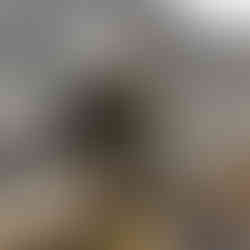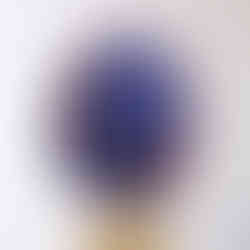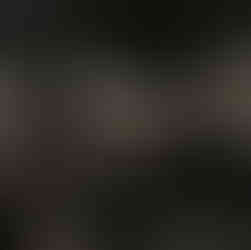Sculpting Cultural Influences
- Ranjan Kaul

- Sep 16, 2024
- 4 min read
Updated: Feb 7
Interview of artist Niyamat Mehta with Ranjan Kaul

Niyamat Mehta (b. 1999) is a rising artist who specializes in sculpture, drawing from the interplay between consumerism and artistic expression, often using elements of surrealism. Many of her works are commentaries on the prevailing zeitgeist. She was the youngest artist on display at the Pallazo Albrizzi in the 2022 Venice Biennale and has also showcased her works at the Kensington Town Hall in London and Artesfera di Valmadrera in Rome. Mehta received her training in the advanced pedagogical method of Robert Bodem called ‘drawing in space’. At sixteen, she was selected as a protégé to Master Sculptor Jason Arkles in Florence, Italy, and went on to study as the youngest student at the prestigious Florence Academy of Art. Today, Mehta regularly lectures and conducts masterclasses at institutions including the London Fine Art Studio, Firenze Geko Art Studio and has her own private studio Atelier Della Firenze in New Delhi.
Ranjan Kaul: Even at a very young age you’ve had a remarkable art journey. How early did you decide and what prompted you to become an artist? Please give a brief account of your journey as an artist. Any role models?
Niyamat Mehta: Thank you very much. I began sculpting, as far as I can remember, during my time at a boarding school in Sanawar. I think I was around 15 years old when I decided to pursue a career as a sculptor. The journey since then has been deeply humbling. I received formal training at The Florence Academy of Art, which broadened my perspectives in both academic and contemporary art. Following this, I began teaching at the London Fine Art Studio while simultaneously participating in exhibitions. My role models include Tracey Emin, Jenny Saville, Auguste Rodin, and Anish Kapoor.
RK: You seem to have chosen sculpture as your primary medium of expression. What is it in the medium that fascinates you? Do you have any plans to explore other mediums in the foreseeable future?
NM: I find great joy in working in three dimensions, which is why sculpture resonates so deeply with me. It allows me to express myself with greater precision than any other medium. Although I also enjoy drawing and believe it to be the foundation of most art forms, I don’t see myself moving away from sculpture. The process is time consuming and absorbing, leaving me with little opportunity or desire to explore other art forms.
Mr. Sinatra
3. Tell us more about how your works are interwoven with a connection to your Indian heritage, specifically your depiction of the 'Polo Bear' fashioned in Indian sartorial elegance.
The Polo Bear, along with the Mr. Sinatra and Mr. Kishore Kumar sculptures, are pop art pieces that draw inspiration from both Indian and Western cultures. I often find inspiration from various sources, and in this case, my work reflects an exploration of London's pop art culture. These sculptures are based on two iconic figures in the music world: Frank Sinatra and Kishore Kumar. In the sculpture of Kishore Kumar, he is depicted wearing a vibrant blue kurta, captured mid-dance, radiating the energy and charisma he was known for. On the other hand, the Frank Sinatra sculpture shows him in a confident, almost proud stance, with his hands in his pockets, wearing a bold red blazer. These contrasting poses and outfits symbolize the unique flair and essence of each artist, while also representing the fusion of Indian and Western influences that inspire my work.
RK: In an earlier interview you cited Beethoven’s final String Quartet as an inspiration for
your work. Could you elaborate on this?
NM: Beethoven's final string quartet, Op. 135, inspires my art through its exploration of profound existential questions and the tension between inevitability and resolution. The piece's emotional depth, especially in its famous "Muss es sein?" movement, mirrors the themes of introspection and finality that I seek to convey. Just as Beethoven challenged traditional forms, I aim to push boundaries in my work, creating a dialogue between complexity and simplicity, turmoil and tranquility.
RK: What art projects have you been working on recently? What is your inspiration or influences
for this?
NM: I've been working on a variety of projects recently, drawing inspiration from many sources. Among artists, Rodin has been a significant influence on my work. My goal is straightforward: I want the viewer to feel the sculpture on an emotional level. If someone tells me a piece feels romantic or profound, that's a win for me, because that's precisely the impact I intended to create.
RK: Contemporary art has become very diverse and multidisciplinary in the last few decades. Do you welcome this trend? How would you place your art practice within this trend?
NM: I think every artist – painter, sculptor, or photographer, etc. – is trying to express themselves in a different way. I believe we are all different and unique in our own ways as artists.
RK: Does art have a social purpose or is it more about self-expression?
NM: Mostly self-expression/reflection.
RK: Where do you create your art? What is your process?
NM: All my sculptures are crafted in my studio, Atelier Della Firenze, in New Delhi. The process begins with a conceptual phase, where I reflect on what I want to create. I then start sculpting in clay. Once the clay model is complete, I create a mold using silicone, which is followed by casting the piece in bronze or hydro resin. The final step involves applying the patina to finish the sculpture.
RK: Tell us about any other interest you may have besides your art practice. Does it get reflected in your art?
NM: I do enjoy travelling and seeing the works of other artists in museums and galleries, and this definitely has an impact on my work.
(All images are courtesy of the artist Niyamat Mehta.)

Ranjan Kaul is a visual artist, art writer and critic, curator, author and Founding Partner of artamour. His works may viewed on www.ranjankaul.com and his insta handle @ranjan_creates.
















































Gurgaon Escorts Agency provides professional and discreet services for clients seeking companionship in the bustling city. With a focus on client satisfaction and confidentiality, the agency offers a range of services to cater to individual preferences and needs.